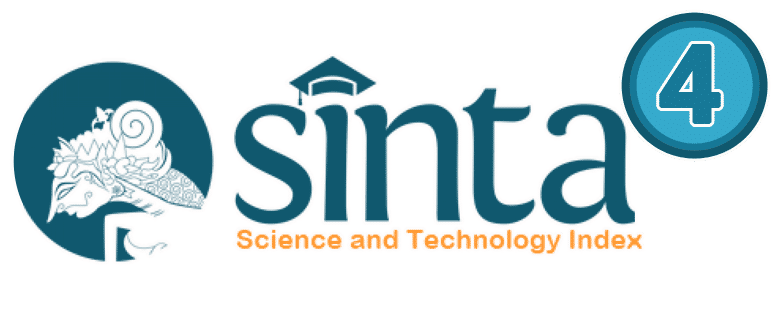Hubungan Self Efficacy dengan Penyesuaian Diri Siswa Kelas XI IPS SMA Negeri 8 Medan Saat Pembelajaran Tatap Muka Terbatas
DOI:
https://doi.org/10.24114/icp.v3i1.42567Abstract
This study aims to find out how the relationship between self-efficacy and self-adjustment of class XI IPS students at SMA Negeri 8 Medan during face-to-face learning is limited. This research uses quantitative methods with correlational research types. The population of this research is the students of class XI IPS SMA Negeri 8 Medan T.A 2022/2023, totaling 108 students, and the number of samples in this study is as many as 85 students with a sampling technique that is Simple Random Sampling. The instrument used is a Likert scale related to self-efficacy and self-adjustment with a reliability coefficient on the self-efficacy scale of 0.899 and self-adjustment of 0.908. The collected data was then analyzed using Product Moment Correlation analysis. The results in this study show that the self-efficacy of class XI IPS students at SMA Negeri 8 Medan is classified as good with a percentage of 20%, 57.6% is sufficient, and 22.4% is low. From the results of the correlation test, it is known that the Pearson correlation coefficient (r) is 0.360 with a sign (p) of 0.001, which means that there is a positive and significant relationship between self-efficacy and self-adjustment. The coefficient of determination (r2) in this study is 0.130, which indicates the contribution of the self-efficacy variable to self-adjustment is 13%. Thus, it can be concluded, the results of the hypothesis which states that there is a relationship between self-efficacy and self-adjustment when face-to-face learning is limited, are accepted.References
Abdullah. (2003). Hubungan antara Efikasi Diri dengan Toleransi dengan Adative Selling pada Agen Asuransi Jiwa. Journal Insight, Volume 1, Nomor 2, Hal 13-30. Yogyakarta: Fakultas Psikologi Universitas Wangsa Manggala. Diakses Pada 25 Maret 2022, dari https://scirp.org/reference/referencespapers.aspx?referenceid=1568132
Agustiani, Hendriati. (2006). Psikologi Perkembangan : Pendekatan Ekologi Kaitannya Dengan Konsep Diri Dan Penyesuaian Diri Pada Remaja. Bandung : Refika Aditama
Ali, M., & Asrori, M. (2008). Psikologi Remaja Perkembangan Peserta Didik. Jakarta : PT. Bumi Aksara
Alwisol. (2009). Psikologi Kepribadian edisi revisi. Malang : UMM Press.
Arikunto, S. 2005. Manjemen Penelitian Edisi Revisi. Jakarta : Rineka Cipta.
Arikunto, S. (2010) Prosedur Penelitian : Suatu Pendekatan Praktik (Edisi revisi). Jakarta : Rineka Cipta.
Bungin, Burhan. (2006) Metode Penelitian Kuantitatif, Jakarta: Kencana,
Desmita (2009). Psikologi Perkembangan Peserta Didik. Bandung : Remaja Rosdakarya
Fatimah, Enung. (2006). Psikologi Perkembangan : Perkembangan Peserta Didik. Bandung : Pustaka Setia
Ghufron,N.M & Risnawita, R. (2016). Teori-Teori Psikologi. Jogjakarta : AR. Ruzz Media
Julia Eva Putri (2021) œPenyesuaian Diri Siswa Pada Model Pembelajaran Blended Learning Pada Masa New Normal Covid “ 19. Jurnal Edu Research 2 (4). Diakses pada 30 Maret 2022, dari https://doi.org/10.47827/jer.v2i4.58
Kementrian Pendidikan dan Kebudayaan. 08 April 2021. Surat Keputusan Bersama Nomor 03/KB/2021. Tentang Panduan Penyelenggaraan Pembelajaran Di Masa Pandemi Corona Virus Disease 2019 (COVID-19).
Mira Gusti M (2017) œPengaruh Penyesuaian Diri Terhadap Aktivitas Belajar Siswa Di Asrama Man Lubuk Sikaping, Kabupaten Pasaman. Skripsi. Bimbingan dan Konseling. Institut Agama Islam Negeri Bukittinggi.
Nissa, S. F., & Haryanto, A. (2020). Implementasi Pembelajaran Tatap Muka Di Masa Pandemi Covid-19. Jurnal IKA PGSD (Ikatan Alumni PGSD) UNARS, 8(2). Diakses Pada 29 Maret 2022, dari https://doi.org/10.36841/pgsdunars.v8i2.840
Ratri Nugrahani (2013) Hubungan Self-Efficacy Dan Motivasi Belajar Dengan Kemandirian Belajar Siswa Kelas V Sd Negeri
Se-Kecamatan Danurejan Yogyakarta.. Skripsi. Pendidikan Guru Sekolah Dasar. Universitas Negeri Yogyakarta.
Santrock, John W. (2007). Perkembangan Anak. Jilid 1 Edisi Kesebelas. Jakarta : PT. Erlangga
Schneiders, A.A. (1964). Personal Adjusment and Mental Health. New York : Holt, Rineheart and Winston.
Semiun, Yustinus, (2006), Kesehatan Mental 3, Yogyakarta: Penerbit Kanisius.
Sugiyono. (2008). Metode Penelitian Kuantitatif Kualitatif dan R&D. Bandung : Alfabeta
Sugiyono. (2011). Metode Penelitian Pendidikan Pendekatan Kualitatif dan R&D. Bandung : Alfabeta.
Susana, (2021). Serba-serbi Pelaksanaan Pembelajaran Tatap Muka Terbatas. Tulungagung : Akademia Pustaka
Supriatna, U. (2021). Flipped Classroom: Metode Pembelajaran Tatap Muka Terbatas pada Masa Pandemi Covid-19. Ideas: Jurnal Pendidikan, Sosial, Dan Budaya, 7(3), 57. Diakses tanggal 29 Maret 2022, dari https://doi.org/10.32884/ideas.v7i3.408
Utami, F.T. 2015. Penyesuaian Diri Remaja Putri Yang Menikah Muda. Jurnal
Psikologi Islami. Volume 1 (1): 11-21, diakses tanggal 30 Juni 2022, darihttp://jurnal.radenfatah.ac.id/
index.php/psikis/article/view/553
Downloads
Published
How to Cite
Issue
Section
License
Copyright (c) 2023 Sri Manisya

This work is licensed under a Creative Commons Attribution-ShareAlike 4.0 International License.
Authors who publish with this journal agree to the following terms:
- Authors retain copyright and grant the journal right of first publication with the work simultaneously licensed under a Creative Commons Attribution License that allows others to share the work with an acknowledgement of the work's authorship and initial publication in this journal.
- Authors are able to enter into separate, additional contractual arrangements for the non-exclusive distribution of the journal's published version of the work (e.g., post it to an institutional repository or publish it in a book), with an acknowledgement of its initial publication in this journal.
- Authors are permitted and encouraged to post their work online (e.g., in institutional repositories or on their website) prior to and during the submission process, as it can lead to productive exchanges, as well as earlier and greater citation of published work.







